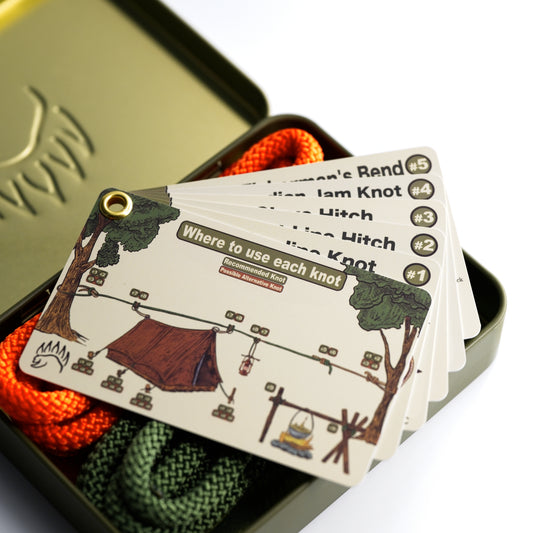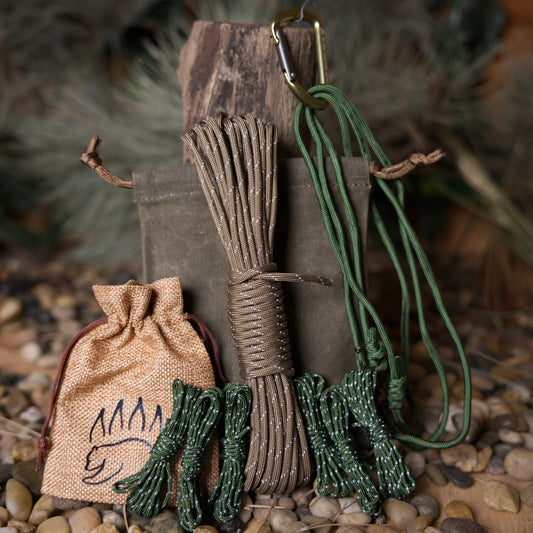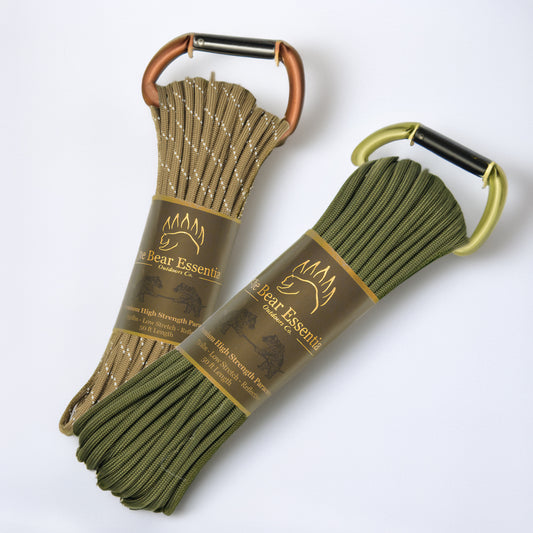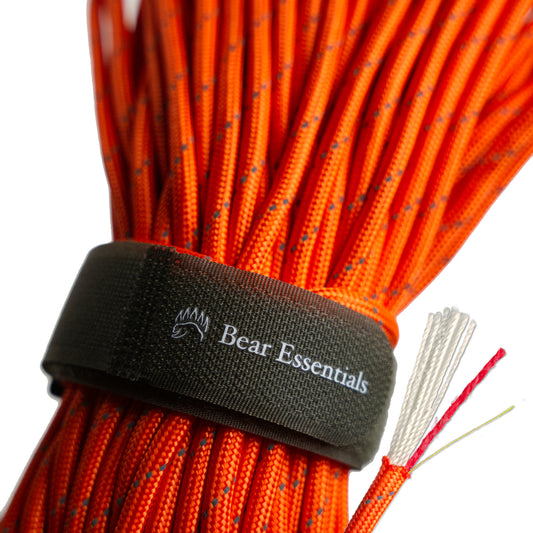How to Tie the Common Whipping
Usage
The Common Whipping is a practical method for securing the ends of a rope to prevent fraying. Widely used in sailing, camping, and bushcraft, it helps preserve ropes and extend their usability in various outdoor and utility tasks. It also has great practical uses in wrapping tool handles.
Why Learn the Common Whipping?
This technique prevents fraying and damage to rope ends, making it an essential skill for maintaining rope integrity in outdoor, marine, and everyday uses.
Common Uses
-
Sailing:
- Securing the ends of sailing lines to prevent unraveling.
- Maintaining ropes for long-term durability in marine environments.
-
Camping and Bushcraft:
- Wrapping tool handles.
- Preserving paracord ends for bushcraft projects.
- Used as an overstrike guard on an axe.
-
Scouting and Utility:
- Teaching basic rope maintenance techniques.
- Ensuring utility ropes stay intact during heavy use.
ABOK Number(Ashley Book of Knots)
Other Names
TypeWhipping / Coiling |
Notable Features
- Prevents Fraying: Stops the ends of ropes from unraveling.
- Quick to Tie: Straightforward to learn and apply effectively.
- Adaptable: Suitable for a variety of rope materials and sizes.
- Compact Design: Does not add unnecessary bulk to the rope end.
Similar Knots
Constrictor Knot vs. Common Whipping
- Pros: Extremely tight and secure.
- Cons: Harder to untie after heavy use.
West Country Whipping vs. Common Whipping
- Pros: Quick to tie; visually appealing.
- Cons: Less secure under heavy use.
History
The Common Whipping has a long tradition rooted in sailing. Mariners have used it for centuries to secure the ends of ropes and lines, ensuring their durability amidst harsh conditions. Over time, it has become a staple for outdoor enthusiasts and scouts, valued for its practicality and effectiveness in rope maintenance.
Security Level
The Common Whipping provides moderate security for preventing fraying. While effective for general use, it may not hold up under extreme tension or repeated stress. For added durability, consider alternatives like the Constrictor Knot.
Downsides
- May Loosen Over Time: If not tied tightly, it may loosen with use.
- Less Effective on Synthetic Ropes: May require additional care or alternatives for slick surfaces.
- Limited Security: Not designed for heavy loads or high-tension applications.
Structure (Step-by-Step Instructions)
- Cut the rope end cleanly to remove any frayed fibers.
- Take a separate piece of thin twine or thread.
- Create a loop with the twine and place it parallel to the rope end.
- Wrap the twine tightly around the rope and loop, working your way toward the end.
- Tuck the working end of the twine through the loop.
- Pull the loop’s standing end to secure the twine under the wraps.
- Trim any excess twine for a clean finish.
FAQ
What is the Common Whipping used for?
It’s used to prevent the ends of ropes from fraying, ensuring their durability and functionality.
Can the Common Whipping be used on synthetic ropes?
Yes, but it may be less effective on slick surfaces. Consider using a Constrictor Knot for added security.
How long does the Common Whipping last?
When tied properly, it can last for years, especially if the rope is not exposed to extreme wear or moisture.
Is the Common Whipping suitable for high-tension applications?
No, it’s better suited for general use. For high-tension applications, opt for a Constrictor Knot or similar techniques.
What type of rope works best for Common Whipping?
Waxed twine or heavy-duty thread works best, as they provide additional grip and durability. It also works with paracord.
Important Notes on Safety
The Common Whipping is a reliable technique for general rope maintenance, but it’s not designed for high-stress or load-bearing situations. Always verify the security of your whipping before use, and consider alternative methods for critical applications. Regularly inspect whipped rope ends to ensure they remain intact over time.









